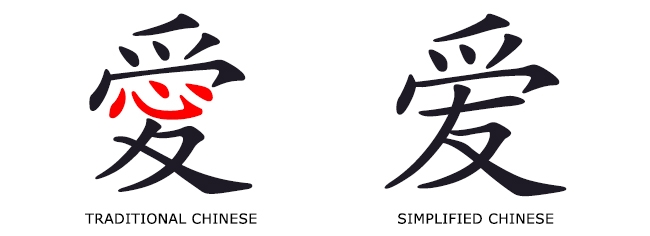One thing that’s always fascinated me is the difference between the traditional and simplified Chinese characters for “Love”.
Here’s what they look like.

The four red strokes in the character on the left represent the word “heart” in Chinese.
It’s replaced by a single stroke in the simplified character.
In traditional Chinese, the heart is central to love—to the thought, word, act, and choice of loving something or something. The heart is itself part of what makes love “Love”.
But not, apparently, when it’s simplified. “Love” is still read, written, and understood the way, even without the heart. But does it still mean the same thing?
I find this profound in many ways.
Maybe one day I’d write a (much more) comprehensive essay on just what and how and why this simple but fascinating shift strikes me so deeply.
Right now, I’m digging into my life, relationships, work, and all the other things I invest myself into to see if my heart’s actually in them. It’s too easy to say I “really like” or even love something or someone when my heart’s not even in the equation.
Maybe it’s the same for you?
